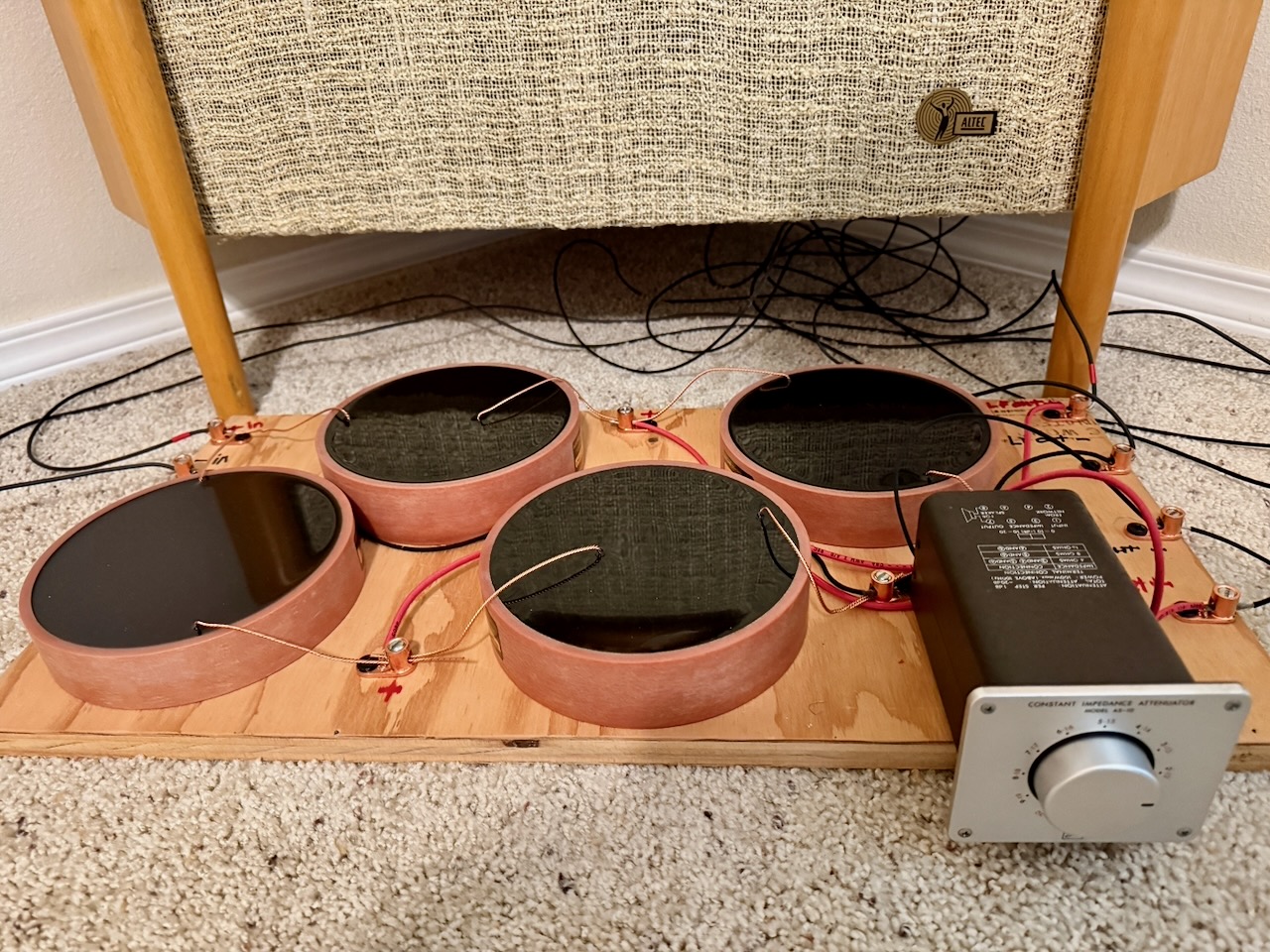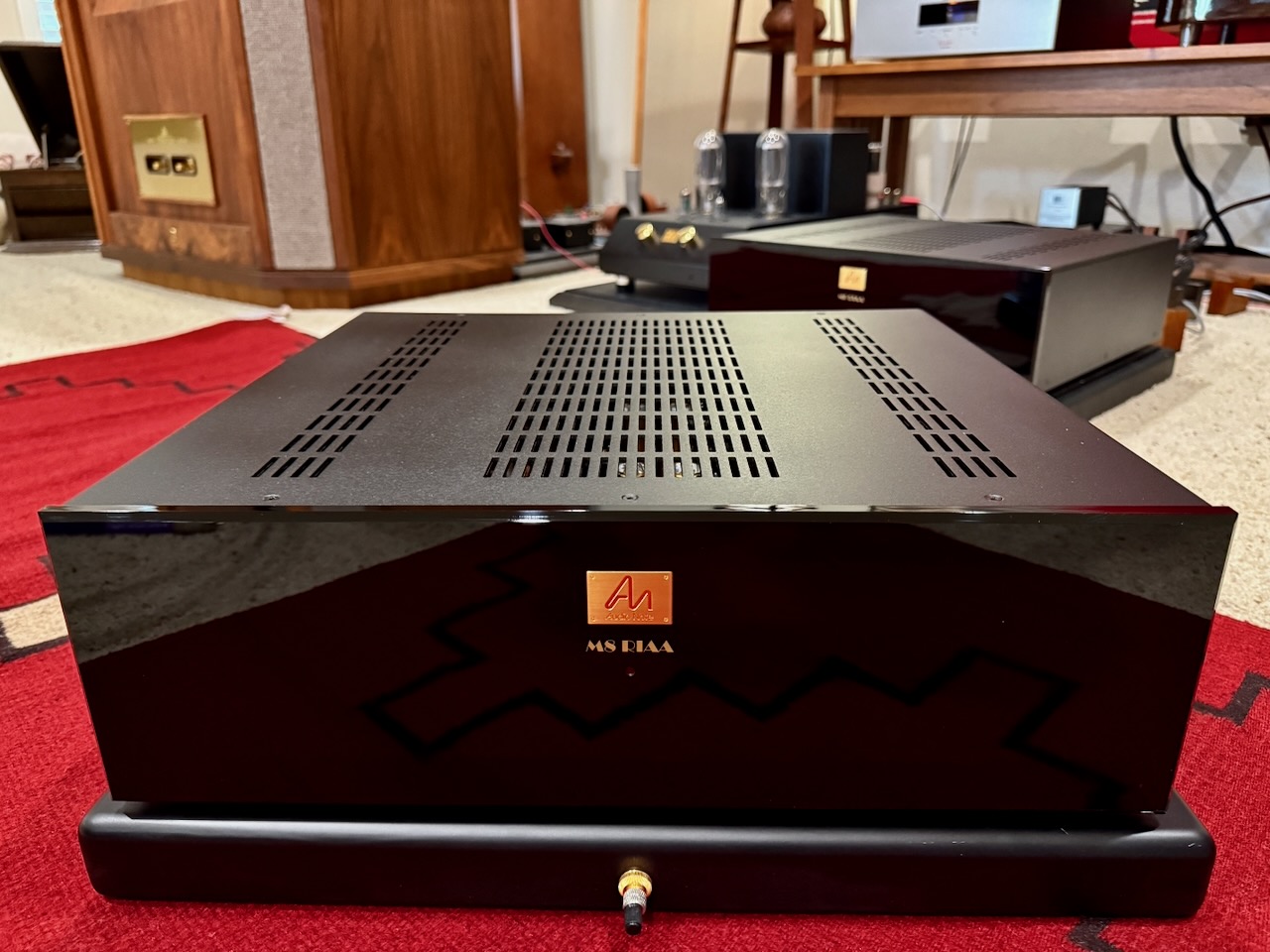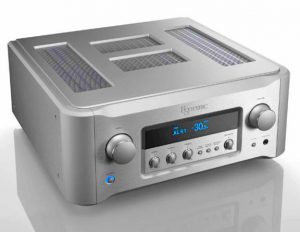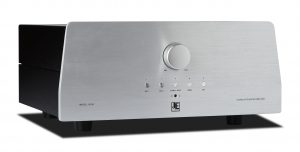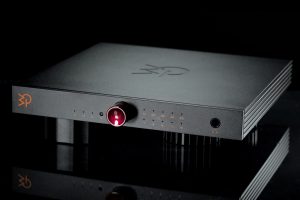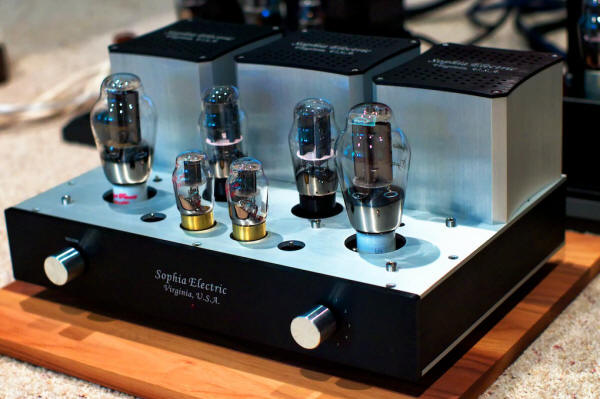
The Sophia Electric Family
Sophia Electric is a family owned and operated enthusiast audio company located in Vienna, Virginia, that designs & builds premium vacuum tubes, vintage-inspired Hi-Fi amplifiers & preamplifiers, and low-powered amplification simpatico loudspeakers, all of which are intended titillate the fancy of high-performance audio devotees & music lovers.
Sophia Electric also designs and builds various transformers, chokes, capacitors, and slow turn-on power supply circuits that are used in their electronics, and in a spirit of camaraderie Sophia Electric makes them available to the 'do it yourself' (DIY) community to use, which I happen to think is a very cool thing to do!
Audio and music are a tradition for Richard Wugang's family, with the whole family being passionate about music. Richard Wugang, with his background in banking & finance, serves as President of Sophia Electric. Richard's passion for music and audio was greatly influenced by his father, Dr. DWU, who had a consuming passion for music and audio when Richard was growing up, particularly for the study of vintage vacuum tubes and amplifiers, which he thought produced remarkably musical performance.
If you happen to call or email Sophia Electric, it's likely that Richard's wife, Sue, who has a Master of Electrical Engineering degree from the University of Maryland, will help you with answering your audio questions. I don't know about you, but I like the personal touch a family approach brings to a business.
Richard and Sue are also proud sponsors of musical performances near their home in the Washington, D.C. area, under the banner of Sophia Electric. Richard and Sue's 14-year old daughter, Sophia Wugang, plays piano for a professional choir group at concerts, and their 11-year old daughter has played piano for her school choir group since first grade. Both daughters have learned classical piano since they were 4-years old, and says Richard, "They both have perfect pitch, so they can tell the sonic difference right away!"
Given what I've heard while listening to music with Sophia Electric vacuum tubes and amplifiers in my own audio system, I'd say that 'being able to hear the difference' runs throughout the Wugang family in a very positive way.
Renaissance of Audio Design
As I was writing this article one word kept popping into my mind when thinking about what Richard Wugang and Richard's father, Dr. DWU, have been doing in their audio designs for Sophia Electric – Renaissance.
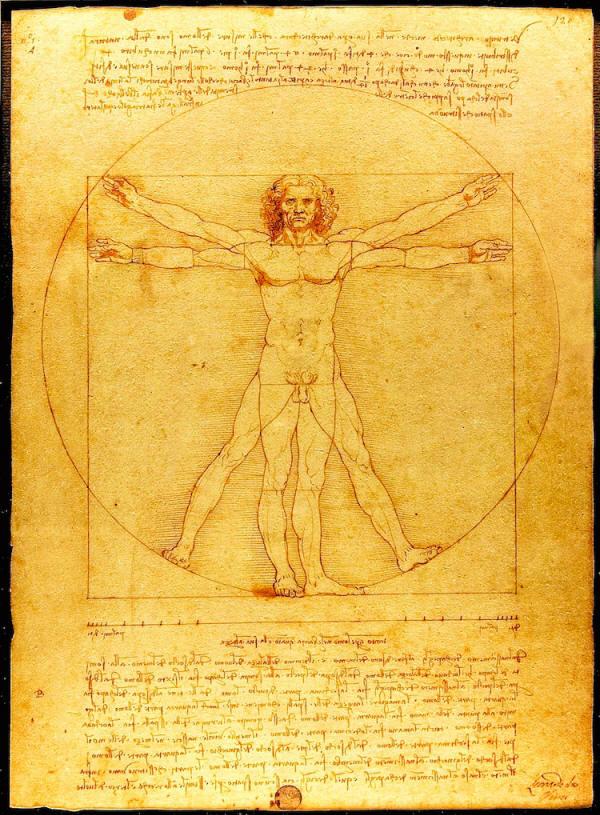
The Renaissance was a period from the 14th to the 17th century where a number of intellectuals such as Leonardo da Vinci and Michelangelo transformed their world through the study and revival of the best ideas from antiquity, while at the same time introducing new and creative ideas of their own. These Renaissance men, and other men & women like them, ushered Europe out of the Dark Ages and into a more enlightened and creative world through a cultural revival in learning and thinking that swept transformatively through society and politics via the natural sciences, art, literature, and philosophy.

Like those Renaissance scholars who were passionate about the study and revival of the best ideas from the Classical period of antiquity, Dr. DWU had a consuming passion for the study of the best classic vacuum tubes and amplifier designs, which he thought produced remarkably musical performance.
Dr. DWU was particularly impressed with the best designs of Western Electric, RCA, and Klangfilm, which were developed for cinema sound reproduction, and he thought certain aspects of their designs were extraordinarily good by any measure.
Dr. DWU recorded his design observations in meticulous detail into his green colored spiral notebook, later to become known as the 'Green Book'. Dr. DWU's chronicle of a lifetime of observations on various aspects of vintage audio technology, in particular those aspects that he thought were primarily responsible for the audio 'magic' that the best in vintage gear seems to be so easily capable of, would be a spark of inspiration that would eventually lead to the creation of Sophia Electric.
As Richard described to me, "In vintage times cinema sound reproduction was a crucially important market, and the best companies spent vast sums of money on technology development. The best vintage companies hired the smartest and most creative people to work on developing their vacuum tube amplifiers during the peak of that golden age of vacuum tube design, but sadly their gold mine of knowledge and production techniques has diminished and largely become lost over the last 80 years."
Richard told me that he feels very fortunate that his father, Dr. DWU, was able to get an early start studying & researching the best of those golden age vintage amplifiers, and their amplifier transformer manufacturing techniques, before much of that knowledge disappeared.
Dr. DWU's passion for audio influenced Richard from an early age, and he started learning to build tube amplifier projects based on Western Electric circuits when he was 10 years old. Richard hand wound his own transformers and built his own chassis for each of his projects. Richard told me by the time he was fifteen he had learned how to redesign and optimize those classic circuits, and how to optimize the output of his hand-wound transformers to best complement his new circuits.
In 2001 Dr. DWU handed Richard his Green Book and asked him to help bring his Renaissance audio dream of developing new amplifiers using the wisdom he learned from studying classic gear into reality, and that is how Sophia Electric got started.
Richard told me that his father's Green Book research notes and amplifier designs became a strong knowledge foundation for him, and a great starting point for his own research in 2005 when he took over the role as the designer for Sophia Electric.
Sadly, in 2007 Dr. DWU passed away. Richard has carried on with their shared dream of building high-performance contemporary vacuum tube amplifiers, based on implementing Dr. DWU's vintage design observations, while at the same time incorporating his own design insights into Sophia Electric's products to take them to the next level of performance.
I think Dr. DWU would be proud of Richard's successful Renaissance strategy of combining the best ideas from vintage designs with the best in contemporary techniques and materials.
Classic Design Ideas Combined with Contemporary Insights
As you probably surmised, I was really interested in hearing from Richard about what sorts of insights he has gleaned from the foundational canon of the Green Book, and about what sorts of design insights he has developed to take performance of Sophia Electric amplification to that next level beyond the insights of the Green Book.
In fact, Sophia Electric's Performance Level Ranking System is based on that very progression of knowledge and discovery sourced from the Green Book: the classic design principles chronicled by Dr. DWU are incorporated into the Level 01 designs; in the Level 03 designs Richard's latest design discoveries are combined with the best ideas of classic designs; and a no-holds barred combination of both classic and Richard's design ideas are incorporated into the individually hand-voiced Level 05 designs.
Here's what Sue told me about the three different levels of Sophia Electric amplifiers:
"Level 01 is the orthodox way to create a traditionally good tube amplifier sound. By using traditional circuits, traditional parts choices, and traditional ways of making the transformers, Level 01 delivers everything a classic amplifier should. It has a warm, lush, golden sound, with the added benefit of an agile and defined bass for engaging melody, tempo, and rhythm—that is the trademark of Level 01."
"Level 03 is the Sophia Electric way of designing and crafting a tube amplifier. From chassis appearance to circuit design and parts choices, Level 03 is based on the knowledge learned from traditional vintage designs; however it utilizes modern material science and technology as well. Level 03 amplifiers deliver superior design performance and a higher-level sonic performance. The additional purity of the 91-03's sound reflects Sophia Electric's view of what good sound should be."
"Level 05 is the top of the line design and execution of Sophia Electric products. Each unit has been individually tuned and re-voiced by the designer before being shipped out. Through the three levels, Richard designs every amplifier with sonic magic, delivers the iconic Sophia Electric musical sound with purity and completeness."
So what does all that imply about the design ideas used in Sophia Electric amplification? Well, Richard told me he wouldn't be able to share the specific details for some of the Green Book insights (hard won knowledge plus intellectual property concerns, and all that), he was glad to share some of the more general observations from the Green Book.
First of all, developing good modern designs means using the best aspects of the vintage circuits when developing new circuits; and secondly, to incorporate the best design elements of vintage transformers into modern high-performance transformers; and thirdly, to use the best vacuum tubes currently available (or to make them if they are not available); and finally, to not be afraid to incorporate techniques and materials that came to light after the vintage period passed that can enhance that old vintage magic.
Richard told me that there are three key design aspects that will determine 85-90% of the sound of an amplifier: the circuit, the vacuum tube choice, and the transformers' design. Richard stressed the importance of using high-quality transformers, and that they will make or break the performance of the circuit. "If you use mediocre transformers you'll never get the performance out of a good circuit that it is capable of," says Richard.
Richard told me that component parts contribute relatively small but important flavor differences to the overall sound (he estimates about 10% of the 'flavor signature' is due to components choices), but that they can't change the baseline sonic & musical fundamentals. Richard said that building a circuit with expensive audiophile parts may not improve the overall sound if the circuit is not optimized to benefit from those parts.
Richard said that most of the quality audio parts—especially boutique audiophile parts—have notable characters where you gain something by losing something. As a designer Richard says he has to work around those parts' signature sounds to utilize the strength that each part is capable of while not being affected by their weaknesses—it is a carefully balanced trade off.
To get good performance, Richard says he would never use only one brand of capacitors or resistors throughout. For example, if all you used were Black Gate capacitors the sound would be overly bright, and conversely, if all you used were Jensen copper oil capacitors it would sound overly dull, however a combination of the two in the right proportions can be very nice. "The best strategy for an experienced designer is to use a carefully chosen combination of different parts to achieve the sound desired," says Richard.
Richard offered some general insights for selecting parts:
Amplifier Chassis: When choosing the size of the chassis for an amplifier, if the amplifier is relatively simple, then Richard prefers to use a small chassis. "The reason for a small chassis is that it allows for a shorter signal path, and the shorter signal path is vastly better sounding than the longer signal paths of an overly large chassis," says Richard. Richard also notes that it is a plus that the smaller chassis is usually stronger and less resonant. Richard says the smaller chassis is part of the reason why the Sophia Electric 91-01 has such great sound (and it does, see my review in Issue 53).
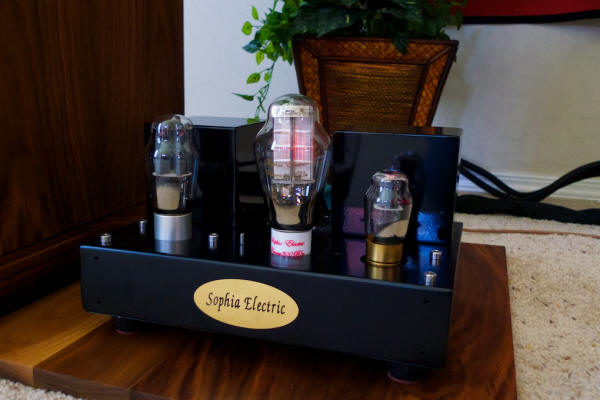
Transformers: Richard emphasizes how important transformers are to the ultimate performance of an amplifier. Richard told me that the power transformer design makes a significant difference in the sonic performance of an amplifier. Richards says that if the power transformer is overly large, it may not be a good thing. "Very much like with output transformers, there is an optimal core size. For the same reason, an overly large gauge of wires in the power transformer may reduce the high frequency extension. A better solution is to use two smaller wires to replace one bigger wire. Sophia Electric prefers to have a 3 – 5 times margin for home use equipment," says Richard.
Resistors: "I don't use overly big wattage resistors in the small signal path. The sound will lose refinement (it becomes rough sounding) by doing so," says Richard. For example, Richard says, "Allen Bradley carbon composite resistors have a warm sound, however, they are very unstable. You have to treat them ahead of time before soldering them into the circuit. An overuse of Allen Bradley carbon composite resistors will cause you to lose high frequency extension, so you have to be careful."
Copper Vs. Silver Wire: Richard says, "The best sounding wire is always made of copper. Silver wire will distort the sound by emphasizing high frequencies. Silver wire is the last resort to compensate for an amplifier's or transformer's lack of high frequency extension."
Wiring Method: Richard also recommends not to sharply bend component leads or wires, and that the 'boutique' style of wiring, where many different wires are bundled together for a cleaner appearance (like with vintage military hardware), is not really the best thing when it comes to audio performance. "When you bundle different signal wires, plus high current filament wires, and high voltage power supply wires together, they will interact with each other. So in the end the sound is not as natural, not as quiet. The Sophia Electric 91-03, 05 amplifier, and 126S amplifier can achieve 0.05 mv AC residual when using the quiet grade tubes." The wiring method Richard prefers to use might not be as pretty as the boutique style of bundling wires that has become popular in some circles, but it sounds better, says Richard.
Power Supply: Richard told me that he thought that the traditional CLC power supply was the best sounding as long as the power supply choke is of high quality, and mentioned that solid state regulators add solid state high frequency noise to the amplifier that is difficult to clean out.
Coupling Capacitors: When it comes to coupling capacitors, Richard told me he thought that smaller value coupling capacitors sound better than the bigger value coupling capacitors. "For example, 0.22 uF coupling capacitors will generally sound better than the 0.47 uF coupling capacitors, as long as the circuit is designed to compensate for the difference. Remember that the most popular vintage cap size was 0.1 uF (even smaller sometimes) in push-pull amplifiers," says Richard.
Richard told me that when designing amplifiers, "There are endless choices of parts and operating points to choose from. Which one is the best choice is a real test of the designer's taste and execution. A good sounding amplifier must test good, but not all amplifiers that test good will sound good. The design of high end audio amplifiers is an art as well as science."
The Sophia Electric 91-03 300B Stereo Integrated Amplifier
If you've been keeping score, you know that the first Sophia Electric amplifiers I wrote about in Issue 53 were the Level 01 (Heritage) 91-01 300B mono amplifiers, which were inspired by the vintage Western Electric 91-A 300B vacuum tube amplifiers used as professional cinema amplifiers in movie theaters in the 1930s. The Sophia Electric 91-01 300B monos incorporate Green Book influenced choices, such as an updated version of the traditional 91-A circuit, traditional parts choices, and traditional ways of making the transformers. I found the 91-01 mono amplifiers to offer a luxurious musical experience with intense emotional involvement through my Tannoy Westminster Royal Special Edition loudspeakers, a presentation that I found so mesmerizing that I bought the review pair.
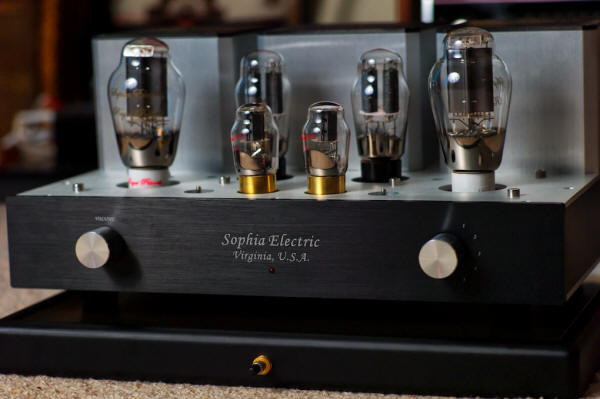
However, the subject of this article is the Sophia Electric 91-03 300B vacuum tube stereo integratedamplifier, which sits squarely in the middle of Sophia Electric's 300B amplifier lineup.
Going from a pair of 91-01 300B mono amplifiers to a 91-03 integrated 300B amplifier seems backwards for ascending performance levels to most high fidelity enthusiasts, who are more used to seeing integrated amplifiers as an entry level amplifier, then ascending to a stereo amplifier in the middle of a product range, and ultimately to a pair of mono amplifiers for the highest performance.
However, in reviewing over the years, I have found that it was not unusual for manufacturers' integrated amplifiers to often offer the highest level of musical performance. Take, for example, the Leben CS-600 integrated amplifier from Japan. I have enthusiastically owned nearly everything in the Leben product line at some point over the years, and in the end it was the Leben CS-600 integrated amplifier that won my heart over the separates. Indeed, the finest amplifier I have ever reviewed, the $31,220 ASR Emitter II Exclusive Version Blue, is an integrated amplifier from Germany.
When you think about it, the approach of combining the preamplifier functionality and amplifier into one chassis makes a lot of sense. It reduces the chassis count by one, eliminates a pair of interconnects and various connectors, it shortens signal paths, and so forth. When executed with ultimate performance in mind, an integrated approach to amplifier design can be a real hot-rod (!), and the Sophia Electric 31-03 represents another example of where this well thought out integrated amplifier's performance exceeds that of its sibling mono amplifiers (more on this in a moment).
As Sue mentioned earlier, the Level 03 91-03 300B stereo integrated amplifier is the embodiment of the way that Sophia Electric thinks that designing and crafting a tube amplifier should be done, using a renaissance blend of vintage and modern ideas: "From chassis appearance to circuit design and parts choices, Level 03 is based on the knowledge learned from traditional vintage designs; however it utilizes modern material science and technology as well."
The 91-03 can be purchased without 300B tubes for $6000 USD, and the standard 91-03 model ships with the Princess 300B tubes at $6500. The 91-03 integrated amplifier I received for review included the optional Sophia Electric Grade A 6SN7s (a matched pair is $240) and the optional Royal Princess 300Bs (a matched pair is $1,200 and worth every penny!).
There is also an optional "Super Quiet Version" of the 91-03 (an additional $1000 USD) that uses a special wiring arrangement and special shielding, as well as the quietest handpicked tubes. Sue told me that the "standard version should be quiet enough for those speakers up to 98dB efficiency. If the speaker efficiency is higher than 100dB, then the super quiet version is recommended." With my 99dB sensitive Tannoy Westminster Royal SE loudspeakers I found the standard version to be totally quiet in use.
General Description
The chassis of the Sophia Electric 91-03 300B stereo amplifier is approximately eighteen and one-eighth inches wide, and twelve and one-quarter inches deep (excluding the front panel controls and rear panel connectors, which each add an approximately one and one-quarter inches for a total depth of fourteen and one-half inches). From the bottom of the footers to the top of the transformer covers is just shy of nine inches, with the top of the 300B tubes extending about another quarter of an inch above the height of the transformer covers, in case you should need to know that for shelf clearance reasons.
The chassis is constructed of laser cut and anodized 5 mm aluminum. The chassis is assembled with stainless steel machine screws, and the top-mounted hex head bolts you see in the photos hold a glass fiber sub-chassis in place. Every mounting and access hole is put in place by CAD controlled machines. The 91-03 chassis feels very sturdy and looks to be very well put together, reminding me of some of the custom laboratory research equipment we have at the National Laboratory I work at on my day job.
The machined faceplate is treated with a special charcoal black anodization process that is darker and glossier than the conventional black-on-aluminum of the side panels, back panel, and transformer covers. The faceplate has "Sophia Electric" and "Virginia, U.S.A." laser engraved into it, as do the transformer covers. Richard spent quite a lot of time designing every single piece that went into the chassis (including the transformer covers), so that it would be good sounding, have a high degree of physical durability, and be attractive in appearance. The 91-03 is heavy at around sixty pounds, so you'll want to be careful when picking it up so you don't tweak your back!
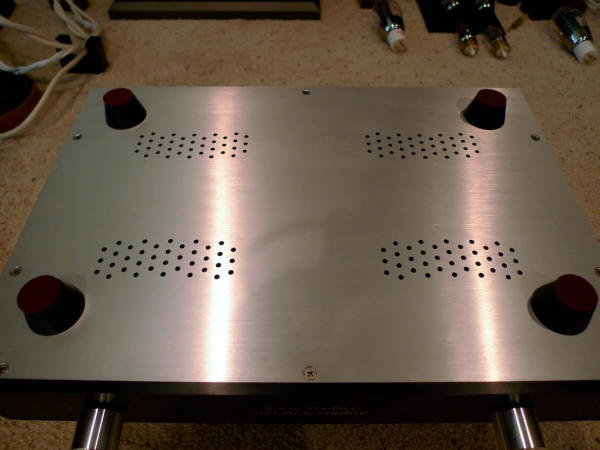
On the bottom of the 91-03 chassis are four rubber footers with felt pads.

On the front panel are two controls: a volume control, and a rotary source selector switch that allows you to select between five different pairs of RCA inputs.
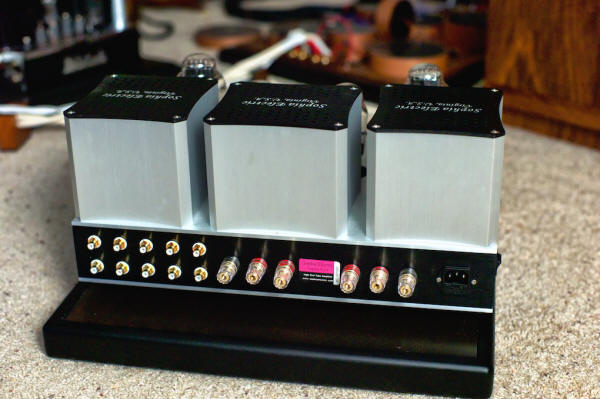
On the back panel—left to right—are five pairs of RCA inputs, three pairs of loudspeaker binding posts, and an IEC AC power input socket.
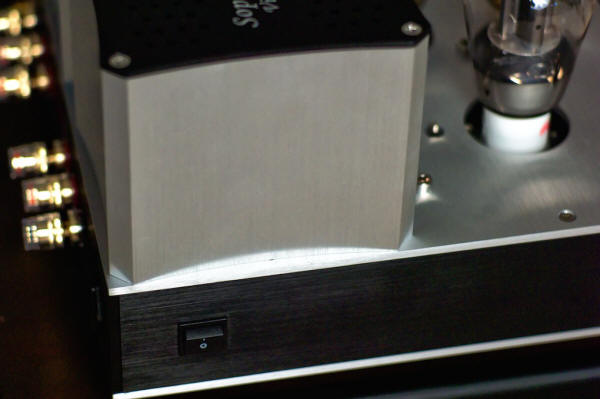
On the left side-panel is the power switch.
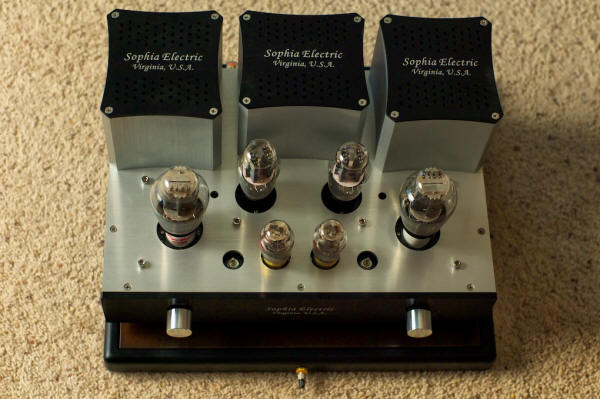
If you look at the top of the 91-03 you'll see three transformers located at the back of the chassis: two output transformers on the left and right corners, and the power transformer in the middle.
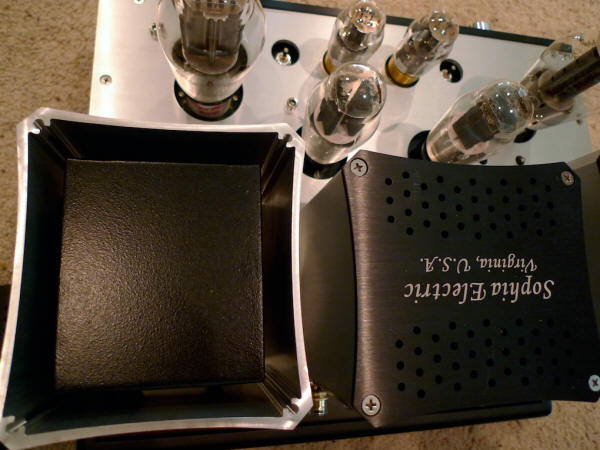
The Sophia Electric 91-03 output transformers are designed and manufactured in house, and Richard says they feature a hybrid design combining the best characteristics of both vintage-style Western Electric transformers and modern high-end transformers, to provide the best of both worlds in sound quality and measured performance.
Sue told me that Richard really treasures the vintage Western Electric transformers because they had a mid-range magic that modern transformer designs just can't seem to match. Vintage Western Electric transformers do have a shortcoming though, said Sue, and that was their limited bandwidth. Richard told me that the vintage Western Electric transformers were developed to complement 1930s movie sound, which consisted mostly of the human voice: "10kHz is what the old maker was shooting for. By 1950-60's JBL speakers and tube amplifiers of that vintage were shooting for 15kHz bandwidth. The late 1950's Williamson circuit used transformers with more than 10 groups and sections in the winding in order to get the bandwidth needed. In the modern age, the Japanese makers like Tango and Tamura, for example, have used smaller cores to get the high frequency extension, but at the expense of the bass extension, while Lundahl and Audio Note pursued double C cores to get the high frequencies, and thus created the modern sound."
Sue told me that Richard had to think hard about how to recreate the output transformer winding method that Western Electric used to give that magical mid-range sound, while at the same time achieving wider bandwidth: "He insisted on using traditional EI cores for their mid-range advantage, and to make the transformer sound like a real vintage Western Electric, he used actual vintage Western Electric core material and a similar paper isolation material."
Through their method of combining the best of vintage Western Electric technology with the best technology of modern designs, Sue and Richard believe their Sophia Electric transformers bring the best of the both worlds of audio performance to transformer design. Sue and Richard say they have also developed a time consuming and complex ageing process that they apply to their transformers that conditions them completely, so that a new Sophia Electric transformer has that magic sound of a vintage transformer at its optimal peak of performance.
I asked Richard to tell me more about the 91-03 transformers performance:
"There is exceptional high frequency extension achieved by using the Sophia Electric EI core 91-03 300B single ended output transformers, compared to other makers who use double C cores for the same level of high frequency extension. The EI core gives a very seductive midrange magic, while the double C core output transformers give a very lean midrange. The 91-03 output transformers also excel in bass extension, adding weight to the music. Say good bye to a midrange-only kind of single ended sound, instead you get a full bodied sound combined with midrange magic, and airy high frequencies, which is a sonic trademark of Sophia Electric single ended amplifiers' sound. The Sophia Electric 91-03 is the must have output transformer if you are going to have a Western Electric 91-style circuit."
Compared to the output transformers in my 91-01 3ooB monos, Richard says "The 91-03 output transformers gives a magical sense of time and space in the sound stage. The wider bandwidth doesn't give a brighter sound, instead it provides more resolution without any added brightness or fatigue."
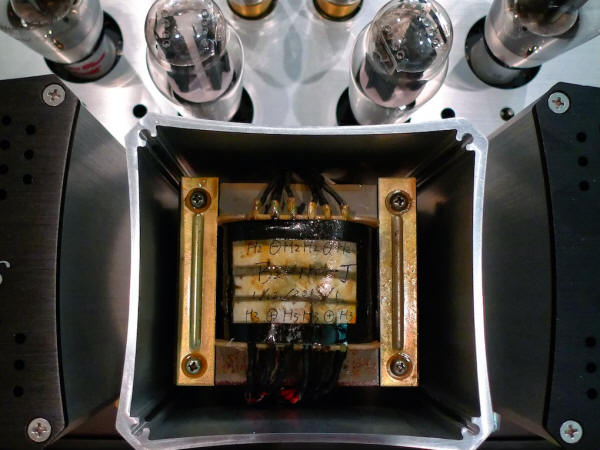
The 220-watt rated power transformer uses the same high-end core materials and winding method used in the output transformers.
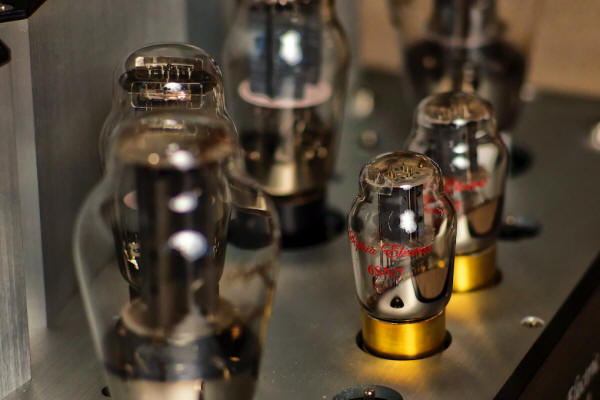
Up front on top you'll find two 6SN7 input tubes, with two 5U4G/5Z3PAT rectifiers located behind them in front of the power transformer.
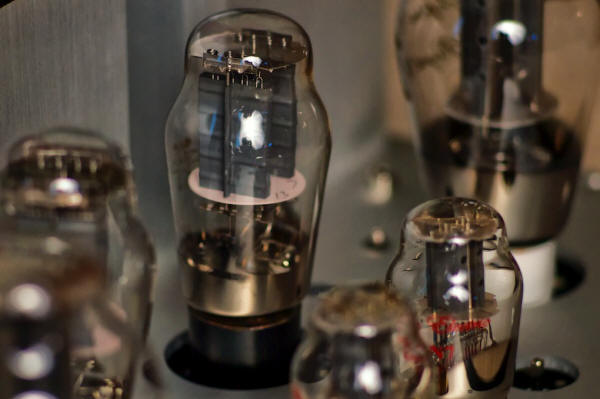
Flanking the two sets of tubes on the left and right are the two 300B output tubes.
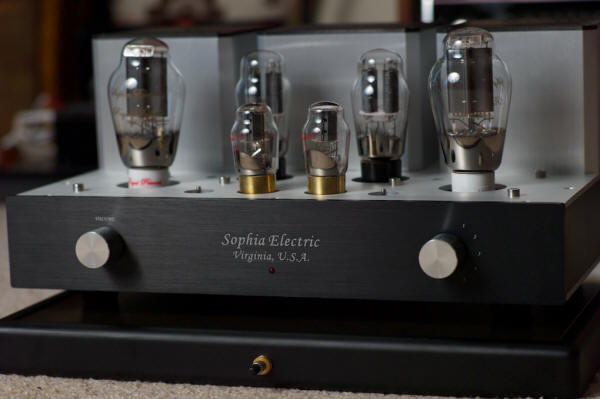
There's hum control pots on the top plate located next to each 300B and 6SN7 tube so you can dial in the minimum amount of hum & noise.
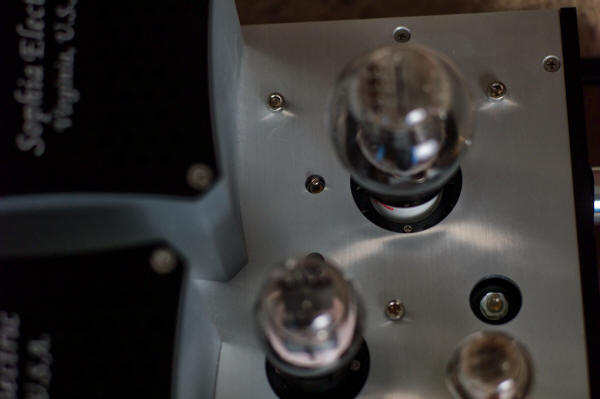
Technical Description
Below you can see the 91-03 with the bottom cover removed.
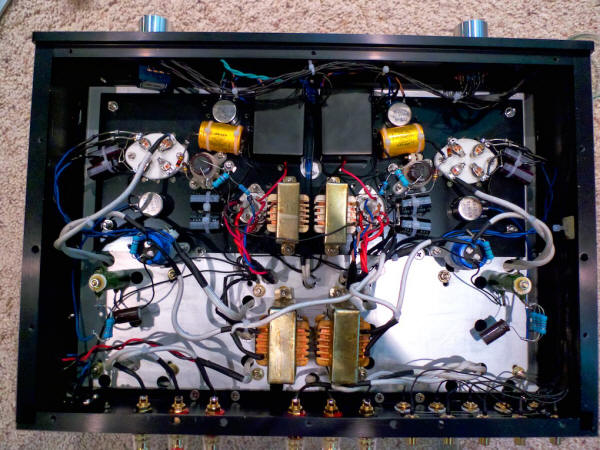
I asked Richard to walk me through what I was seeing with the bottom cover removed:
"The bottom view shows the amplifier is fully symmetrical, with left and right channels that are mirror like to each other, hence the name dual mono stereo. It is an elegant solution for incorporating two channels into one box. Point to point wirings throughout with two epoxy potted module black boxes contains key driver stage circuit. Hard aircraft grade aluminum and military grade glass-fiber sub-chassis were chosen for the best sound in a chassis design. The optional Jensen oil caps are for those with horn speakers or coaxial speakers like Tannoy. The standard Sophia Electric tin foil caps are for conventional speakers with dorm tweeters. The main B+ caps are a top US brand and the smaller caps are a mix of US, European and Japanese caps. All part values were chosen through a voicing process, and each part has 3-5 times margin for power rating and, at the same time, for good sound."
The Review System
For an analog front end I used my classic EMT TSD-15 phono cartridge mounted on a VPI Classic turntable.
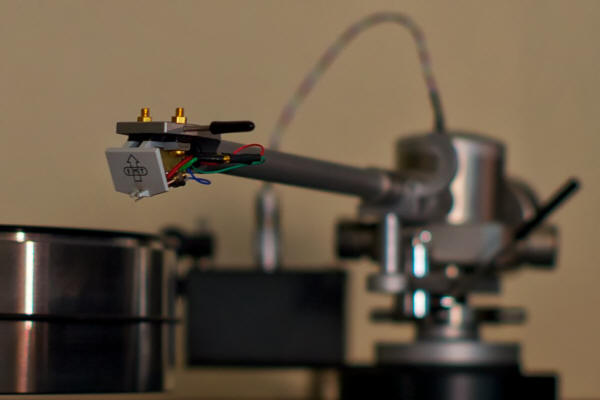
For a digital front end I used my iMac with the Mavericks OS and iTunes, the impressive Channel DPure Music software, a Locus Design Group Polestar USB cable, and the Mhdt Lab Stockholm V2 vacuum tube USB DAC sitting on an Acoustic Revive TB-38 Quartz Under-Board.
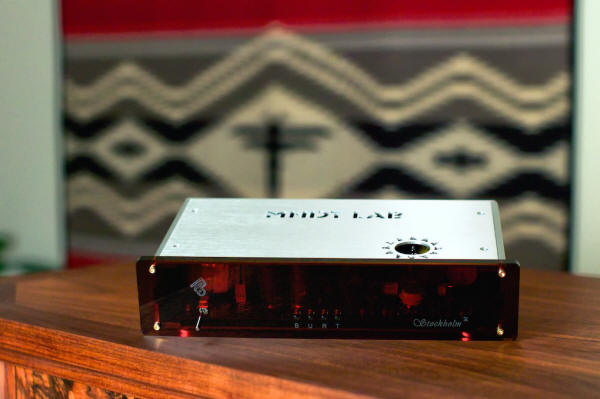
The phono & digital sources were either connected to my restored vintage mint+ McIntosh MX110Z tuner/preamplifier/phono-equalizer from vintage vacuum-tube specialists Tom Manley and Terry DeWick in Knoxville, Tennessee, or directly to the Sophia Electric 91-03.
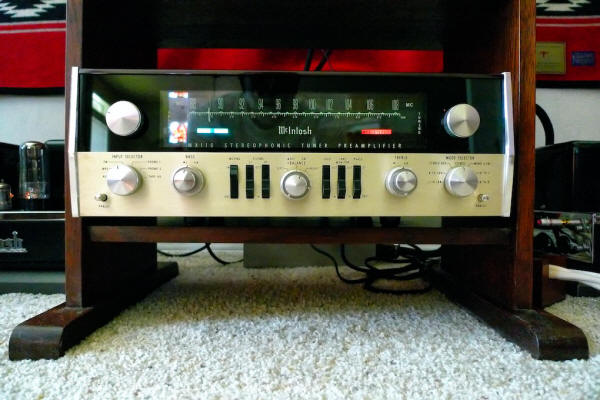
During the review period I placed the Sophia Electric 91-03 on the Acoustic Revive RAF-48 Air Floating Board for isolation.
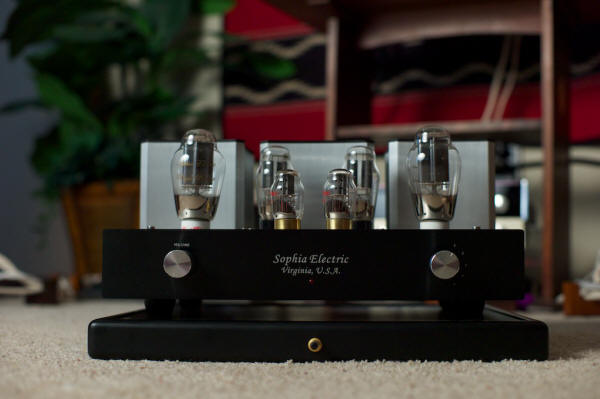
I used my Sophia Electric 91-01 300B mono amplifiers, and my vintage McIntosh MC30 6L6GC mono amplifiers that were restored by Yves Beauvais at Vintage Vacuum Audio, for comparators during the review period.
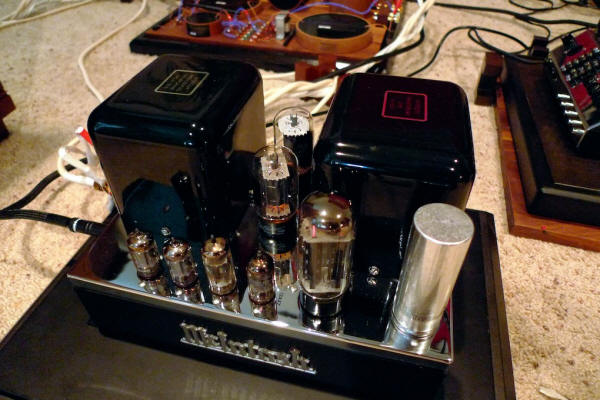
I have been using the superb Sablon Audio Panatela interconnects for all of my interconnect needs, except for with the Mhdt Stockholm V2 USB DAC, where I used an extra long pair of Acoustic Revive Single Core interconnects (in for review).
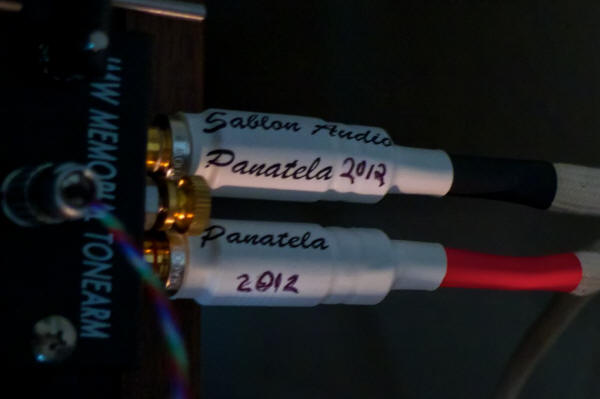
From the Sophia Electric 91-03 I used a 1-meter set of Panatela component speaker cables to connect to the Duelund CAST external crossovers…
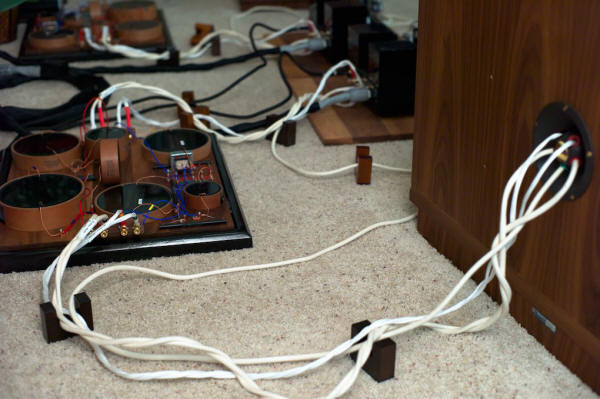
…and an 8-feet pair of Panatela component speaker cables from the Duelund CAST external crossovers to the Westminster Royal SEs' Dual Concentric™ driver connections.
I used a Sablon Audio Gran Corona power cord to connect the Sophia Electric 91-03 to AC power via an Acoustic Revive RPT-4 Ultimate Power Distributor, and a Sablon Audio Quantum Gran Corona to connect the Mhdt Lab Stockholm V2 to AC wall power. I used an Acoustic Revive Power Reference AC power cord to connect my VPI Classic turntable to the Acoustic Revive RPT-4 Ultimate Power Distributor. My vintage McIntosh MX110Z preamplifier has a captive power cord, which was plugged into the Acoustic Revive RPT-4 Ultimate Power Distributor, which in turn was plugged into my wall outlet via an Acoustic Revive Power Reference AC power cord. I used the superb combination of an Acoustic Revive CB-1DB receptacle base plate, CFRP-1F carbon fiber outlet plate, CS-F2 Outlet Stabilizer, and an Oyaide R-0 receptacle installed into my wall outlets to power my system.
Listening Impressions
During the review period I listened to the Sophia Electric 91-03 300B integrated amplifier in a variety of contexts: stand-alone as an integrated amplifier, using the New Valve Order SPA One & SPA-II as phono preamplifiers, and the Mhdt Lab Stockholm V2 USB DAC for digital; and as a power amplifier with my vintage McIntosh MX110Z or Leben RS-100U as preamplifiers.
The Sophia Electric 91-03 proved to be versatile and non-fussy in use, was completely reliable, and worked extremely well in every context I tried, so you'll likely have an easy time matching it to your system too.
For my first listening session, I tried the Sophia Electric 91-03 as an amplifier powered by my vintage McIntosh MX110Z preamplifier, and compared it to my vintage McIntosh MC30 6L6GC mono amplifiers and my Sophia Electric 91-01 300B monos. First I used the Mhdt Stockholm V2 USB DAC streaming the fantastic Northwest Public Radio's Jazz 24 64kbps signal containing of some of the best playlists of jazz music I've ever come across.
I thought it would be a fun to compare the Sophia Electric 91-03 300B integrated amplifier, with its artful combination of vintage & modern designs ideas, to my actual vintage McIntosh MC30s 6L6GC mono amps, which I have been having a blast with lately. Granted, they are dramatically different designs, but who cares? This hobby is about having fun with awesome music and Hi-Fi gear, and sometimes very different approaches can be illuminating!
As an aside, my Tannoy Westminster Royal Special Edition loudspeakers with their new external Duelund CAST crossovers are sounding so incredibly good that it is an absolute treat to listen to music through them, and a lot of fun to compare audio gear with them as well. Recently I put a pair of 6.8 uF Duelund CAST Silver capacitors (below) in the C1 position of the Duelund-Westminster Royal SE high-frequency crossover, that Frederik Carøe, the founder of Duelund Coherent Audio, sent me for review in a future issue of Positive Feedback. Let's just say the performance of my Westminster Royal SEs went out of sight with the new Duelund Silver CAST capacitors in place, and they gave me deeper insights into the performance of the associated equipment during the review period than I would have ever thought was possible.
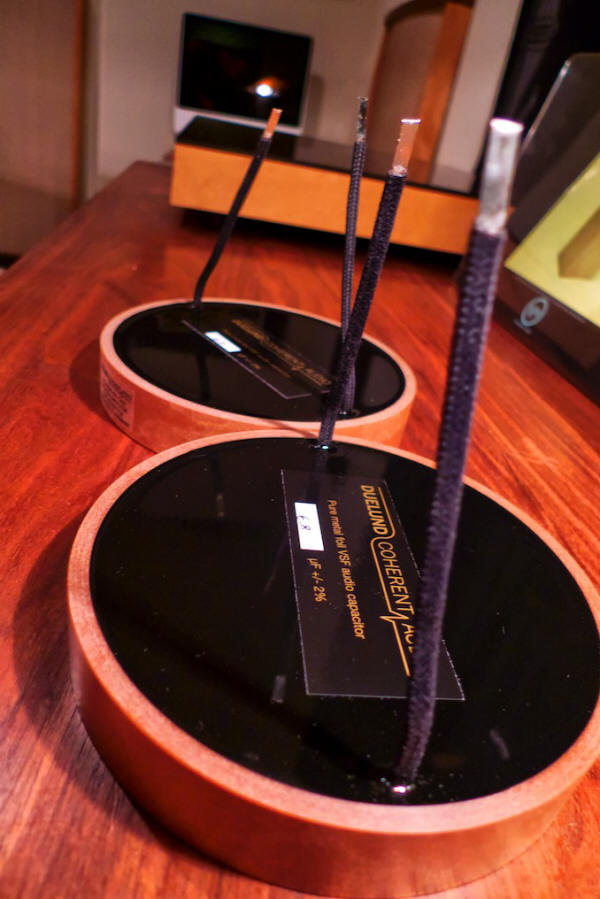
In this context the MC30s sounded smooth, rich, colorful, and timbrally & musically sophisticated playing the live stream from Jazz 24. Lou Donaldson's L.D. Blues sounded stunning, with horns sounding appropriately brassy, and the music full of life and color. The upright bass on Rene' Marie's Let's Do It sounded natural, appropriately detailed, with lots of good foot tapping tempo, and with natural timbre. Rene's voice sounded big, breathy, and powerful with lots of emotive impact. With the MC30s providing the juice the musical side of life was always convincing, with tempos, rhythms, and melodies that sounded natural and engaging, with the effect of making every song an emotionally riveting experience.
The Sophia Electric 91-03 sounded more transparent and holographic than the MC30s, with a more vivid soundstage and more tangible images, and a larger sense of space. Lynne Arriale's piano sounded ravishingly beautiful on Mountain Of The Night, with gorgeous tone color, and I got a real sense of tactile presence of her touch on the keys. Rhythmically the 91-03 was really impressive, and melody lines displayed the sense of touch of Lynne's playing, were very dynamic, and that made them come alive. Speaking of dynamics, even though out-powered by the MC30s to a considerable extent (30+ watts vs. 9 watts), the 91-03 was more dynamic sounding within its power envelope. Overall the 91-03 was a little darker and warmer than the MC30s, albeit less colorful than the overtly Technicolor nature of the MC30s.

The Sophia Electric 91-03 sounds more evenly balanced top-to-bottom than the vintage Mac monos, and it sounds more extended & resolving in the bass. On top the Sophia Electric 91-03 sounds more detailed as well. In the mid-range the 91-03 provides that amazing SET combination of transparency, naturalness, and holographic imaging that makes people love 300B SET amplifiers. Even with the Jazz 24 live stream (which isn't exactly hi-rez) I was hearing better layering back into the soundstage than I'm used to hearing in many really good vinyl based systems.
Ok, certainly some of that has to do with the astonishing level of performance the Duelund CAST external crossovers have brought to my Westminster Royal SEs, but still, the Duelund CAST crossovers can only allow you to hear what the amplification is capable of, and what I'm hearing from the 91-03 is damn nice.
I've been on a vintage journey lately, listening to a lot of vintage iron with my audio pals, and I've been really impressed with a lot of what I've heard. Yes, I've been impressed, enough so that I've bought a full set of vintage McIntosh kit to use as a vintage reference. Those designers from the Golden Age of vintage audio really knew how to voice the equipment to get the maximum musicality. It's a different experience than contemporary audiophile-style audio in a lot of ways, but there's no question that the music I've played through vintage gear has always been satisfying and engaging, a kind of 'voice of god' experience from a musicality perspective, despite the vintage gear's limitations, and having to listen around them.
So what are those vintage limitations? Well… lows and highs are usually rolled off. Bass can be muddier or boomier, and less resolved. Vintage kit isn't usually as transparent as modern gear, and vintage gear doesn't usually do the audiophile thing of soundstaging, imaging, sense of space, and resolution as well. That matters a lot to some folks. Also vintage kit is a pain in the ass to use because the connectors are so different from what we're used to in modern gear: contemporary oversized RCAs often don't fit, screw terminals intended for bare wire don't like modern spade connectors very well (too big), and my MC30s don't even have power switches! With vintage gear there's also the risk that their vintage parts with all those years on them are going to fail at some unexpected time, which adds a little tension and unpredictability to the situation, and there's only a few people around anymore that understand them well enough to repair them. Oh yeah, they can be expensive too, because there are only so many of them, and they are an enchanting part of audio history, so they can command a premium.
Enter the Sophia Electric 91-03 300B SET integrated amplifier: I think the 91-03—here discussed only as an amplifier—does all those good musical things vintage gear does so easily—and which a lot of modern audiophile gear doesn't do—like convincing tempo, melodies, rhythm, tone color, timbre, and the like, that make music fun and rewarding to listen to over the long haul. Yet the 91-03 also adds in those audiophile-style performance attributes of excellent soundstaging, imaging, transparency, resolution, and an even response top-to-bottom, that a lot of modern listeners demand. The 91-03 also has modern connectors that are a joy to use, and it has been completely reliable during the review period. So I'd say Richard has done an excellent job of getting the best of the vintage musicality experience, while adding in modern high-performance audio attributes, along with the ease of use that comes from using modern connectors. Very nicely done.
Now let's shift gears and give my Sophia Electric 91-01 300B monos a listen, and briefly compare them to the Sophia Electric 91-03 300B integrated amplifier, and see what going from a Sophia Electric Level 01 300B amplifier to a Level 03 300B amplifier means performance-wise for the music lover.
On Charlie Haden's & Hank Jones' Wade In The Water from their Steal Away album, the 91-01 monos sounded great, just as they always have in my system. In comparison to the 91-03, it was apparent that the bass was not as tuneful and resolved as with the 91-03, but still it was nicely agile and made for an engaging presentation of melody, tempo, and rhythm. On Diana Krall's Is You Is Or Is You Ain't My Babythe 91-01 monos had noticeably less sense of space and less defined imaging compared to the 91-03 amplifier. Don't get the wrong idea though, as the 91-01 monos are great amplifiers, and always got the music right like they did with Harold Mabern's Don't Get Around Much Anymore, where the piano playing was absolutely enthralling from a musical perspective, and the bass solo was convincing and taut. The 91-01 is not as dynamic as the 91-03, which really puts some 'jump' in the music, allowing beat, melody, and rhythm to come alive.
In short, the Sophia Electric 91-03 300B stereo amp has all of the alluring musicality that the Sophia Electric 91-01 300B monos possesses, but takes musicality, and particularly sonic performance, to a much higher level. If you love your 91-01 300B mono amps (I do), I suspect you'll also be quite smitten with the performance of the 91-03 300B stereo amp (I am), which offers a similar rich & musical voicing, but takes musicality and sonic performance to a higher level.
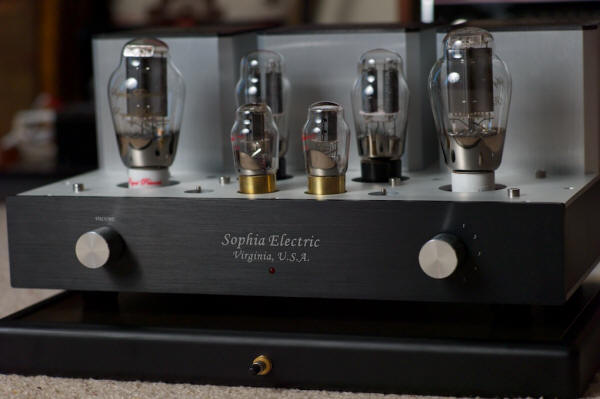
My MC30s sounded awesome playing Nirvana's Unplugged in New York LP. The late Kurt Cobain, a Washington State musical treasure, was someone whose music always spoke to me emotionally. Kurt was 10 years younger than me, but his rough, tortured vocals, emphatic guitar playing, and dark-side grunge lyrics captured the feel of what it was like to live in the Pacific Northwest during that period better than anyone else. There was a huge sense of space, rich timbral textures, deeply infused tonal colors, and tremendous emotional connection through the MC30s on Unplugged in New York, creating a musical experience that will not soon be forgotten.
The Sophia Electric 91-03 captured all of the emotional angst on Unplugged in New York too, but added to it that SET magic of living presence through holographic imaging, a huge sense of space, and lots of soundstage layering, depth, and width. The timbral textures and tone color were probably more accurate through the 91-03 compared to the MC30s, but there is no denying that the MC30s have a very charming Technicolor way of presenting the music that is very dramatic from a musical perspective, and always very enjoyable.
The Sophia Electric 91-01 mono amps played Unplugged in New York like champs too, albeit with less resolution than with the 91-03 stereo, while still having that SET magic, the 91-01 has a bit less of that 'living presence' of holographic imaging, sense of space, and soundstage layering, depth, and width, that the 91-03 does so easily. The timbral textures and tone color were great with the 91-01, but less vivid than through the 91-03
These are three great amplifiers, that's for sure, with the MC30 monos being an absolutely delightful set of vintage amplifiers, and the the 91-03 being a remarkable contemporary amplifier that gets the vintage musical vibe right with the added benefit of high-performance sonics, along with the convenience of modern connections. The 91-01 mono amplifiers pretty much split the difference between the vintage world of the Mac MC30 monos and the renaissance design of the 91-03 stereo amp. I thoroughly enjoyed each of these amplifiers during the review period, and they all excel at playing music, although the Sophia Electric 300B amplifiers are more user friendly with their modern connectors on a day-to-day basis.
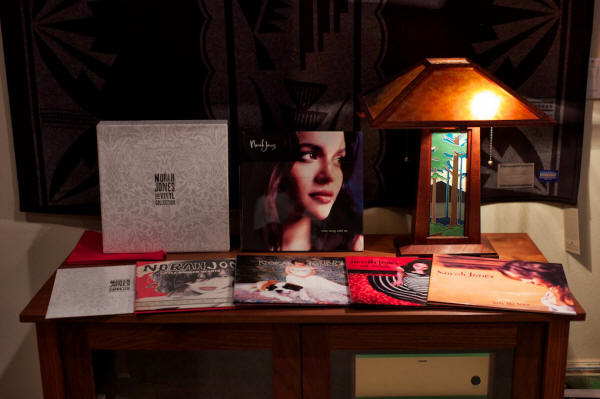
I was looking forward to listening to the Sophia Electric 91-03 300B stereo amplifier as Richard intended it to be used - as an integrated amplifier. I pressed the New Valve Order SPA-II phono stage into service for vinyl duties. On Nora Jones' Come Away With Me LP the Sophia Electric 91-03 integrated provided a rich, warm, naturally colorful, and musically evocative presentation of this mellow acoustic album. The truthful timbral textures and tone colors as served up by the Sophia Electric 91-03 amplifier really enhanced my listening experience, both in adding a realistically textured beauty to the instruments, and a silky, velvety quality to Nora's voice that made it seem like she was whispering right into my ear, making listening incredibly emotionally involving.
Listening to Come Away With Me through the Sophia Electric 91-03 300B amplifier made it easy to see why the album won eight awards at the Grammy's, and I was immediately able to relax into the musical flow and enjoy every second of it. The Sophia Electric 91-03 was truly superb musically, really tickling my fancy with its musical charms of tuneful melodies, rhythm, and tempo, and at the same time it also offered up rock-solid imaging, an expansive sense of sound-space that filled my listening room, and a wide and deep soundstage with lots of instrumental layering back into its depths, making for a really well rounded presentation that really delivered intensity of emotion from the music, along with the sonic fireworks of the recording process.
On the Analogue Productions 45-RPM reissue of Johnny Hodges and His Orchestra's Blues-A-Plenty the Sophia Electric 91-03 300B amplifier instrumental timbres really sounded fantastic, and the brass sounded out of this world! Roy Eldridge's trumpet was clear as a bell, but never harsh and piercing through the Sophia Electric 91-03 300B amplifier. Johnny Hodges' & Ben Webster's tenor saxophones were fantastic too, and positively glowed with feeling as they took their solos. The Sophia Electric 91-03 really gave a tremendous feel for tempo, melodies, and rhythms, which really made the music come alive and engage my emotions into the music. The beat was well served by Jimmy Woode on bass, and the Sophia 91-03 really made that bass sound like an upright bass is supposed to sound. If you love brass you're going to love the Sophia Electric 91-03, for it renders brass in an utterly natural and ravishingly beautiful manner that I found hard to resist, not unlike sitting in Seattle's Jazz Alley. With the Sophia Electric 91-03 it was really clear what I was getting for the extra money I paid for those 45-RPM reissues, and you can bet I'm going to be stocking up on more 45s!
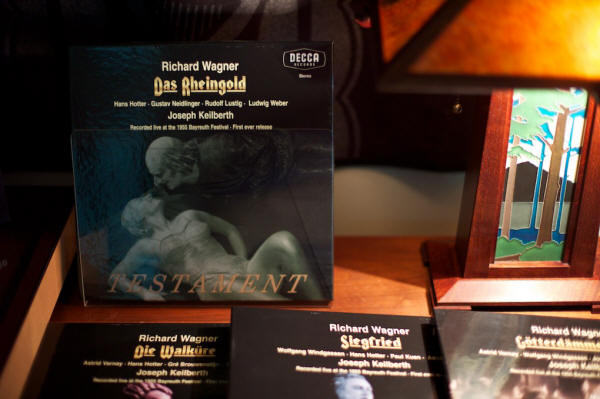
Listening to the Decca Das Rheingold that was recorded live at the 1955 Bayreuth Festival, with Joseph Keilberth conducting, through the Sophia Electric 91-03 300B amplifier was stunning, with strings being naturally smooth and rosiny, and with vocals emerging holographically from the stage. The Sophia Electric 91-03 really served Das Rheingold well, and made the performance exciting and emotionally riveting by resolving a lot of information in the recording, but oh so naturally, it was never anything other than completely enjoyable and entertaining. I don't know if it's that ol' SET black-magic with 300B tubes, but the presentation of Das Rheingold through the Sophia Electric 91-03 was as intimate and present as a small group jazz recording, making me feel like I was front row center for that electrifying performance.
Summary and Conclusions
Record after record, the result was pretty much the same: whether I was listening to jazz, classical, opera, or rock & roll I was always immersed into an intense musical experience with the Sophia Electric 91-03 300B integrated amplifier.
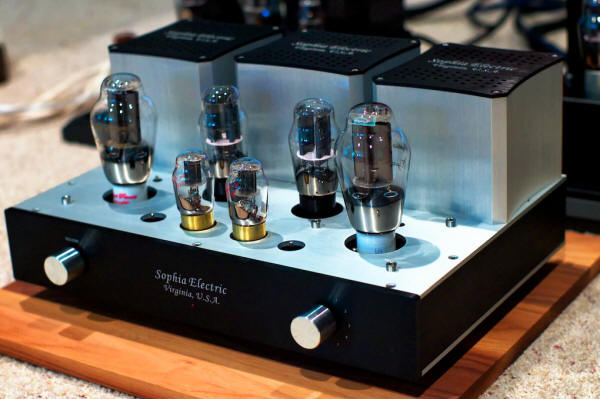
I love the way Richard voiced the Sophia Electric 91-03, and I think he truly achieved his goal of combining the best of vintage musicality with modern sonics. In my system the Sophia Electric 91-03 300B integrated amplifier has a warm, natural, colorful, and dynamic sound, which makes music exciting and rewarding to listen to. The Sophia Electric 91-03 is very evenly balanced top-to-bottom, with bass response that is tight, deep, agile, and tuneful, and never overblown the way it is with some 300B amplifiers, and it has highs that sound extended and silky smooth.
From a musical standpoint I thought the Sophia Electric 91-03 was very adept at presenting realistic and involving melody, tempo, and rhythm, which infused the music with feeling and life. Timbre was full of realistic texture, and the superb presentation of tone color heightened the emotional impact of whatever music I was listening to at the time.
Sonically the Sophia Electric 91-03 300B integrated amplifier had a purity and transparency that I really appreciated, with a huge billowing soundspace, and a wide and deep soundstage, with vivid images that layer back into its depths.
Music lovers talk about how single ended triode (SET) amplifiers like the Sophia Electric 91-03 excel in the midrange, and by doing so provide a more direct and intense connection to the music. Over the years I have found that to be largely true about SETs magic midrange qualities, and I have really enjoyed listening to the SET amplifiers that have come my way.
What sets the Sophia Electric 91-03 300B SET integrated amplifier apart from all the other SETs I have listened to is that it extends that SET magic midrange up into the highs and down into the lows, and at the same time that it provides an intensely musical experience, it also provides exceptional sonic performance. It is simply the best, most enjoyable, fun to listen to, and exciting SET amplifier I have ever had in my system. As a bonus, the price is very fair.
Here's some really good advice for music lovers: Combine the Sophia Electric 91-03 300B integrated amplifier with one of the New Valve Order phono stages, get some really good cables like the Sablon Audio Panatelas, a reasonably sensitive pair of loudspeakers, a decent vinyl front end, and just sit back and let the music flow over you in completely enjoyable fashion… for years! This will get you off the hi-fi gear merry-go-round, and instead of buying new hi-fi gear all the time, you can spend your valuable money buying every record that catches your fancy to build up your music collection. You'll be glad you did, because the gift of music will be one that will enrich every day of your life for your lifetime.

I really like the Sophia Electric 91-03 300B SET integrated amplifier, it is an exceptionally musical piece of hi-fi electronics, and I can't think of a better choice for the beating heart of your hi-fi system. Yes, indeed, highly recommended!
Sophia Electric
www.sophiaelectric.com




